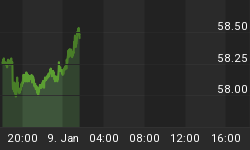Retail sales grew by less than expected at 0.1% in February after a flat showing in January, while sales ex-autos fell 0.1% from 0.2% in January. This weak report coupled with the downward revision in the January core sales should further drag on US Q1 GDP . We're not sure about the validity of claims by some economists attributing the weakness to cold weather, when February is a month known for its cold temperatures. The decline in sales was broad-based, even when excluding autos, gasoline and building materials.
The weakness in retail sales comprises an economic argument to trigger further unwinding in the yen carry trade, in which point it will extend to other dollar pairs. Unlike the carry trade unwinding of two weeks ago, which was largely market-based and only limited to low yielding currencies, today's report triggers an all round sell-off in the US dollar, lifting EURUSD above 1.3220 and GBPUSD above 1.9340.
The chart below shows year-on-year retail sales excluding autos against the Fed Funds rate. The annual increase slowed to 3.07% in February, the lowest pace since April 2003. The year-on-year rate rids of the periodic fluctuations of the month-to-month rate and suggests that a Fed easing could occur as early as May. We see a 70% chance for May cut and expect 50 bps aggregate easing in 2007.

The chart below shows USDJPY seeking further declines towards the 116.44 support, followed by the 116.20 trend line support. The usual rebound is seen limited to 117.00, while 117.30 remains solid interim resistance, which traders are unwilling to test ahead of further US data releases this week.

EURUSD finally breaches above the 1.32 figure, but the vital test for further strength stands at the multiple trend line resistance levels of 1.3250 and 1.3275, which could be realized by end of week ahead of array of manufacturing figures. This week's industrial production figures should prove crucial in avoiding 1.3275 EURUSD depending on whether we see another monthly decline.

















